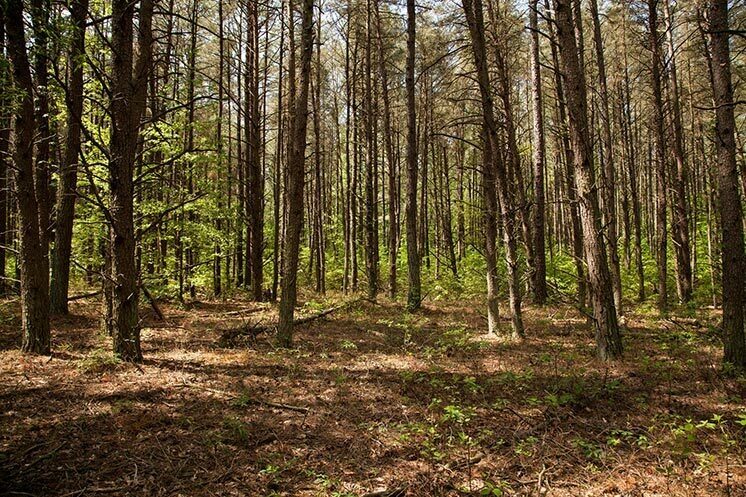Why Teach About Forests?

When Europeans first arrived to the Chesapeake Bay region in the 1600’s they found vast, diverse forests covering 95% of the Bay’s 64,000-square-mile watershed.
Today, forests cover about 58% of the watershed, or 24 million acres. While forest conditions have changed over the past 400 years, forests still remain critical to the health of the Bay, wildlife and the people who call it home.
Why should YOU teach about forest?
Forests are vital to the health of the Chesapeake Bay because they provide us with many services. Forest not only provide habitat for wildlife but they also protect our clean water.
Similar to wetlands, forests act as giant sponges that absorb and slowly release pollutants such as nutrients and sediment from stormwater runoff. Forest also clean our air by absorbing and trapping nitrogen, particulates and other pollutants released into the atmosphere by cars, industries, agriculture and construction.
Your local forest and trees in your schoolyard are great subjects to teach about. Students can go outdoors, even if its just on school grounds, to learn how to collect scientific data by identifying the types of trees and taking measurements like circumference.
If you are a social studies teach, trees are like a living history book because of their tree rings. Teach your students how we can teach about the past through the rings on a tree. Or if you are an art teacher students can use leaves and twigs to create their very own masterpiece.
So how do YOU teach about forests?
You will find a wealth of forest related resources and lesson plans out there. Below are some of the ones that include hands-on, project oriented studies.
- State of Chesapeake Forests - Conservation Fund
- Stream ReLeaf Curriculum - Maryland State Department of Education
- A Tree for Every Child Learning Guide - American Forests
- What’s a Tree Worth Lesson - Penn State
- Who Cares About Forests Lesson - Penn State
- Tree Products Scavenger Hunt Lesson - Penn State
- Seeds of Change Lesson - Bay Link
- Impact of Climate Change on Bees in Eastern Forests Lesson - EPA
